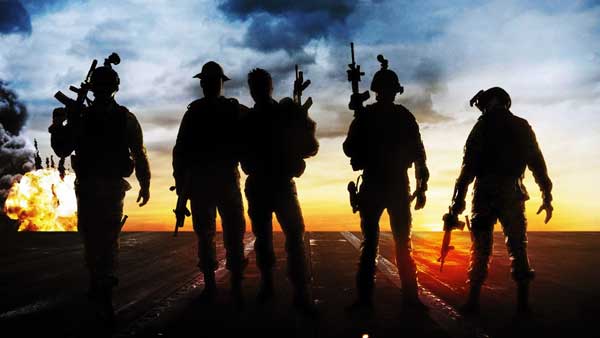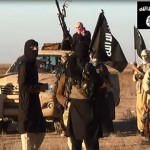IDR Blog
Contemplation of Non-Kineticism and Military Capabilities

Are armed forces still the Profession of Arms? The profession of arms is unique because of the lethality of our weapons and our operations, the very core purpose and existential reason of which is to apply lethal force. Professional Soldiers (airmen and sailors) in India are volunteers, bonded with comrades in a shared identity of profession and units (or airbases/ships) and culture of sacrifice and devotion to service. Military leaders establish a professional identity and culture, which is founded on selfless service to the nation, and ethos toward the Armed Forces and their mission.
Land, sea and air combat will never vanish, and the armed forces revel in to strategies’, prioritise and train largely for this typology of warfare. Capturing enemy territory can often be valid military objective and sets conditions for political effect. Armed forces in India are grounded and trained for a kinetic synergy, largely firepower, on the battlefield, be it infantry, armour, mechanised infantry, artillery, aircraft or naval forces. At operational and tactical level, combined arms or, of late, integrated battle groups operate, or must do so, under a single commander. This joint force, tasked for a mission under a doctrine, works to retain for itself, the armed forces warfighting as core, basic or only function. However, this formulation provides the political decision makers with limited options for execution, when required.
Last 25 years military experience in India has shown that victory or even strategic advantage is more complicated. The Surgical Strikes of 2016, the Balakot Air Strike of 2019 or the occupation of heights South of Pangong Tso and Chushul Sector in 2020, were well planned and executed tactical operations, of immense national value, though may not produce strategic (long-term) outcomes. For strategic options, one can fall back to the attack on the Parliament in Dec 2001 or the terrorist attack in Mumbai in 2008, when the armed forces would have provided the decision-makers with a near-identical response option. One is not too confident if the quiver has more and better options in 2021! Singularity of plans of strategic kinetic response, hence, tends to limit options and hence promote cleavages between policy makers and operational realm. Thus strategic planners must grapple with objectives and plans well beyond tactical control of territory, and such like war-aims. Good military strategy is far more than manoeuvring forces to engage an enemy successfully, there are many reasons why the purpose of engagement may not be destruction of enemy forces. The key important factor for us is that warfare, even in our context, is not a static but a dynamic process, set against a backdrop of significant strategic (and technological) upheaval. Need is to contemplate consequences and outcomes over time and multiple domains.
The military of the future will be a profession of arms and computers (and not arms alone), where the latter will be of even larger potency and lethality. Even shared culture or identity among soldiers will have different connotations. The Samuel Huntington’s description of the armed forces as a profession with “primary function being the application of violence” may not, hence, accurately describe contemporary warfare, with lesser involvement in creation of violence, and maybe succeeding or obtaining strategic advantage with nonviolence – with even zero collateral damage.
Today’s battlespace extends beyond earth’s atmosphere and pierces national boundaries at the speed of light, has an incommensurate informational, economic and social content. With expanding norms of warfare – including virtual ones like cyber and electromagnetic spectrum, military strategy has become interdisciplinary and multi-domain, aimed to create capabilities to win or create strategic advantages in complex wars. The information era has made warfare more diverse, more competitive and continuous in peace and war alike (grey zone), than ever before. Cyber domain and mass and social media have empowered newer garrisons of warriors, with skills and access to technology. The cliché ‘strategic corporal (or naik)’, is based upon and magnified by social networking that makes tactics to have strategic impact. The future battle-space will be unbounded or limited by territory with many dissimilar contestations, and strategic corporal will also create space for strategic geek in ripped jeans, luminous tees and sneakers!
Contextually, strategy, has myriad definitions, its essence being influencing the behaviour of the adversary, though the simplest being the balance between ends, ways and means. Ways are to employ means to achieve ends, while recognising war as a mere continuation of political policy by other means. In the oncoming era, linking of strategic planning, which may not necessarily be military alone, to purposeful and yet pragmatic political ends is the call. A modern strategist, hence, must communicate effectively on physical, virtual, informational and moral battle-o-sphere (to coin a new one!), and in that contemplation, create the basket full of ‘means’, provide ‘ways’ or a number of options towards anticipated political ends, to the decision-makers.
In modern warfare, adversaries will employ technologically advanced weaponry and means of delivery, with airpower, space power and cyber power as primary sources for creation of force asymmetry. Military capabilities allow us to defend against adversaries, and provide abilities to the armed forces to successfully prosecute a wide variety of operations. The war fighting capabilities thus generated are effective to the degree that they enable to impose of our will on adversaries. Creation of capabilities is contingent on the resource the armed forces get over a period of time and how successfully can they be transform it into effective military power. Military effectiveness hence is the outcome of the resources provided to the military and its capability to transform these resources into effective war fighting capability. Within the constraints of the defence budget in India, the joint and service-specific doctrines and long term vision and strategy also dictate creation of military capability. The number of military personnel, the number of tanks or missile launchers or artillery guns, aircraft or warships in the inventory, facilitate in assessment of military capabilities, to an extent.
What constitute capabilities for punitive, credible and dissuasive deterrence, and under what conditions will they work? These terms get loosely used, and lead to tedious questions that mandate jettisoning of flawed arguments and taking sound decisions. The spectrum of deterrence by denial (dissuasion) describes a nuanced effort to shape the thinking of the adversary, affect his psychological state of mind so that he is convinced that his actions are unlikely to succeed, and hence seeks alternatives to aggression or belligerence. Deterrence by punishment (punitive) on the other hand, threatens severe penalties or punishment, even nuclear escalation. In the latter case, the adversary has to be convinced that we possess the capabilities and national will to employ them. In our case the deterrence refers largely to military capabilities – a threat of military response. Our deterrence strategies’ hence need examination over history on their success or otherwise. With changing warfare, a much broader notion of deterrence is necessary that keeps the focus on threats but expands the scope to non-military capabilities and actions. While all may not relevant to us, these can be threats of economic sanctions, diplomatic exclusion, information operations or in cyber, electromagnetic spectrum and space domains.
What effects will specific capabilities create? Easily, the terms like degrade, deny, dislocate, neutralise, paralyse, shape, shock, and suppress come to mind, largely though at tactical (or some at operational) levels. Accordingly, will the firepower, including precision guided one, independently neutralise and degrade an adversary’s bridge head, which will have operational effect of denial of an offensive axis? During the induction ceremony of Rafale jets, the Raksha Mantri had stated in Sep 2020, “…induction of Rafale jets is a big and stern message… especially to those eyeing our sovereignty.” Hence, will the air-superiority and precision strikes capability created by two squadrons of multirole Rafale jets assure the nation of decisive decimation of an adversary’s armoured thrust, at Longewala (location of the previous epic battle) or Asal Uttar/ Khemkaran or Palanwala-Jhaurian? As an operational capability, such an exclusive air-defended sector can relieve large ground-deployed forces, for other tasks! What effect does the capability of five Regiments of Arjun Tanks in the desert bring to fore, that did not previously exist, and would be a game changer? Can the one million strong CAPF in India provide only 15% of its manpower capability during conflictual scenario to relieve major infantry formations in defence? Such tactical capability will provide large infantry formations for offensive operational tasks. Will the C130/ C17 fleet and its magnificent performance in Easter Ladakh in 2020, not facilitate force projection? There is an inherent dislike in India on the heading ‘expeditionary power’ which refers to proven ability to deploy limited capabilities at strategic range. Global force projection may not, as yet, be relevant to us, yet we have ambitions of being relevant in Indo-Pacific context, and are now seeking and expanding relationships with US Central and Africa Commands!
Perceived suite of capabilities, and effects that they assure and bring to the table, facilitate the goal of punition or dissuasion, convincing a potential adversary that cost-benefit calculus is unfavourable. The potential adversary must believe that we have the capability and will to do what it threatens. An aggressor can try to undermine our willingness to respond, by using “salami slicing” approaches, that is using a long series of low-level aggressions to change the facts on the ground without ever taking action that would justify a major response. Such strategies are designed to confuse and place us in a dilemma, as every small violation cannot be responded to! However, if we do not begin to punish or respond to minor transgressions, our strategic position will erode over time. We must show that we have no choice but to react, and that the capabilities exist to forcefully and cunningly do so. It is essential to reiterate that capabilities mean kinetic and non kinetic instruments alike. Like, even capability of undertaking psychological operations through varied means, can intimidate adversary’s population, and paralyse the other nation’s leadership.
Effective strategy-making requires an awareness of combined effects beyond joint and combined arms thinking. Contemporary military strategy needs to be integrated with other instrument of power across all domains, civil and military alike, and present more combination of effects. Call of the day is to revamp or jettison the current prose-based Acceptance of Necessity (AoN) system in procurement processes. Every item under procurement must be justified as part of the strategy, part of ways-means to achieve ends, part of a middle-long term Capability matrix, and the effect that is sought to be created by that capability. Even modernisation sought for legacy equipment must not be by rote or as a replacement, it ought to be evaluated weighed under the capability-effect balance. Capabilities must be on a short list that leads to core competencies, randomly like ISR, rapid mobilisation and decisive operations, precision engagement and information, cyber, air and sea superiority.
It is often stated that India has live contested borders, and strong manifestation of threats, and hence the armed forces must be based upon a capability cum threat model. This is fraught with duplications, and needs be revisited. Capabilities are also for thwarting threats. Long term integrated procurement plan or any such compilation must emanate from the mother-document of basket of capabilities sought over a period of time, how the employment is envisaged, what effect it will have on the adversary or warfare, or deterrence formulation and finally, how will it contribute to military and political end state. This will also eliminate duplications or triplications, and maybe an existing or similarly planned capability acquisition in another service (or arm domain), or in the larger national security systemic, will negate many a procurement. Hopefully, it will cut siloes and stovepipes, and lead to genuine integration. In our nation facing serious competing challenges, a near stagnant defence budget caught in capital-revenue imbroglio, we need to modernise with a clear vision and strategy.
Courtesy: https://www.claws.in/contemplation-of-non-kineticism-and-military-capabilities/




